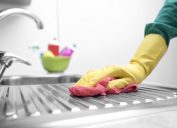15 Ways You're Cleaning Your Bathroom All Wrong, According to Experts
Don't let these common cleaning mistakes do more harm than good to your home's bathrooms.

Having more time at home due to the coronavirus pandemic may have given you some extra incentive to tackle household chores you've been avoiding, like getting your bathroom clean. However, when it comes to sprucing up that space, there's a major difference between getting the job done and getting the job done right. From bathroom-cleaning mistakes that cause aesthetic harm to ones that could lead to major repairs down the road, we asked experts to reveal the ways you're cleaning your bathroom wrong.
1
Using multipurpose cleaner on every surface
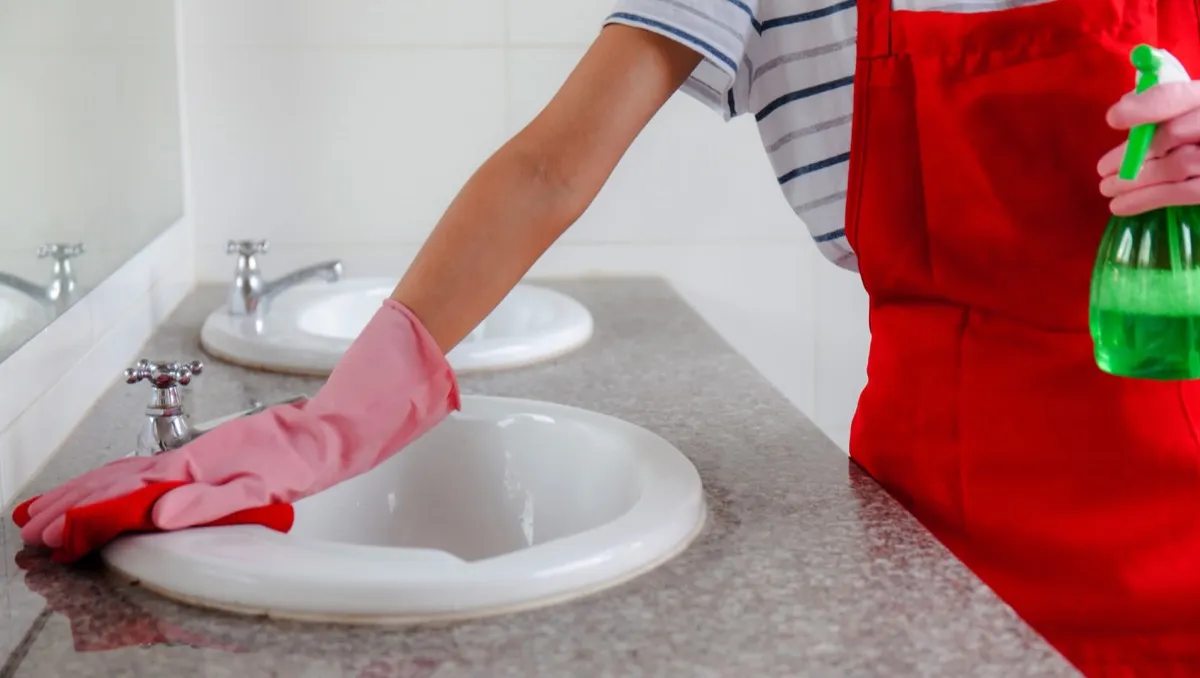
While that bottle may say "multipurpose," that doesn't mean it's appropriate for every surface in your bathroom.
"Bath and tile should have their own product, as well as sink and countertops, and glass and mirrors," explains Ashley Harkrader, founder of Pretty Clean CLT. If you're using the wrong kind of cleaner—say an acidic multipurpose solution on a granite counter—you could actually degrade the surface over time.
2
Not using a degreaser on your tub
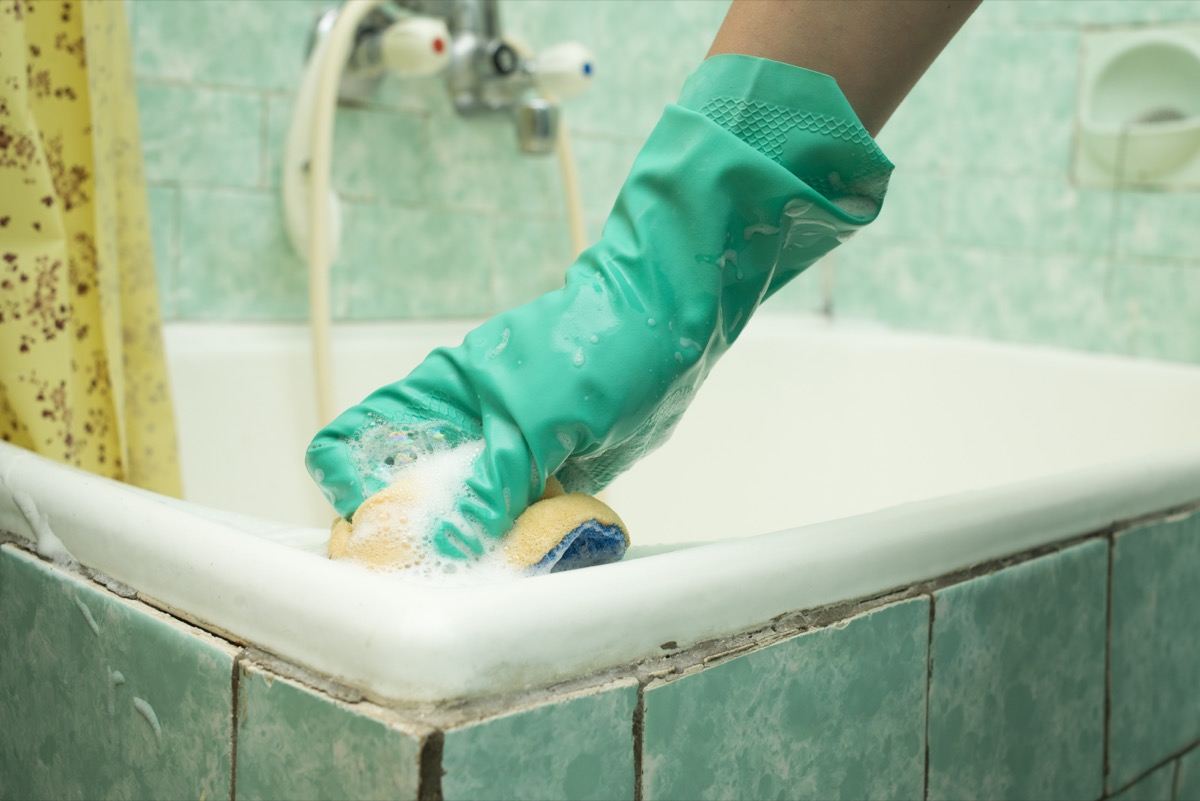
Elbow grease isn't the only thing you need to erase that ring around your tub.
"Soap traps grease little by little, so every time you use soap, some residue is left behind," explains Abe Navas, general manager of Dallas-based Emily's Maids. Your best bet for removing it is a degreaser—like the kind you use in the kitchen, he says. And for more ways to get things spick and span, discover these 33 Crazy Cleaning Tips That Actually Work.
3
Using lemon-based products on your toilet

Those lemon-scented cleaners may make your house smell good, but using them to clean your toilet will only cause problems in the long run.
"Acid wears down the rubber used in toilets and other parts of your bathroom, like your sink, so avoid them at all costs," says Navas.
4
Mixing acidic products with bleach

Bleach can be an effective cleaner on its own—but mix it with vinegar or other acidic products could be a dangerous combination.
"Acidic products may interfere with some widely-used products in bathrooms," including bleach, says Navas. Combined, the two substances can create toxic chlorine gas, according to the Centers for Disease Control and Prevention.
5
Using a chemical-based drain cleaner
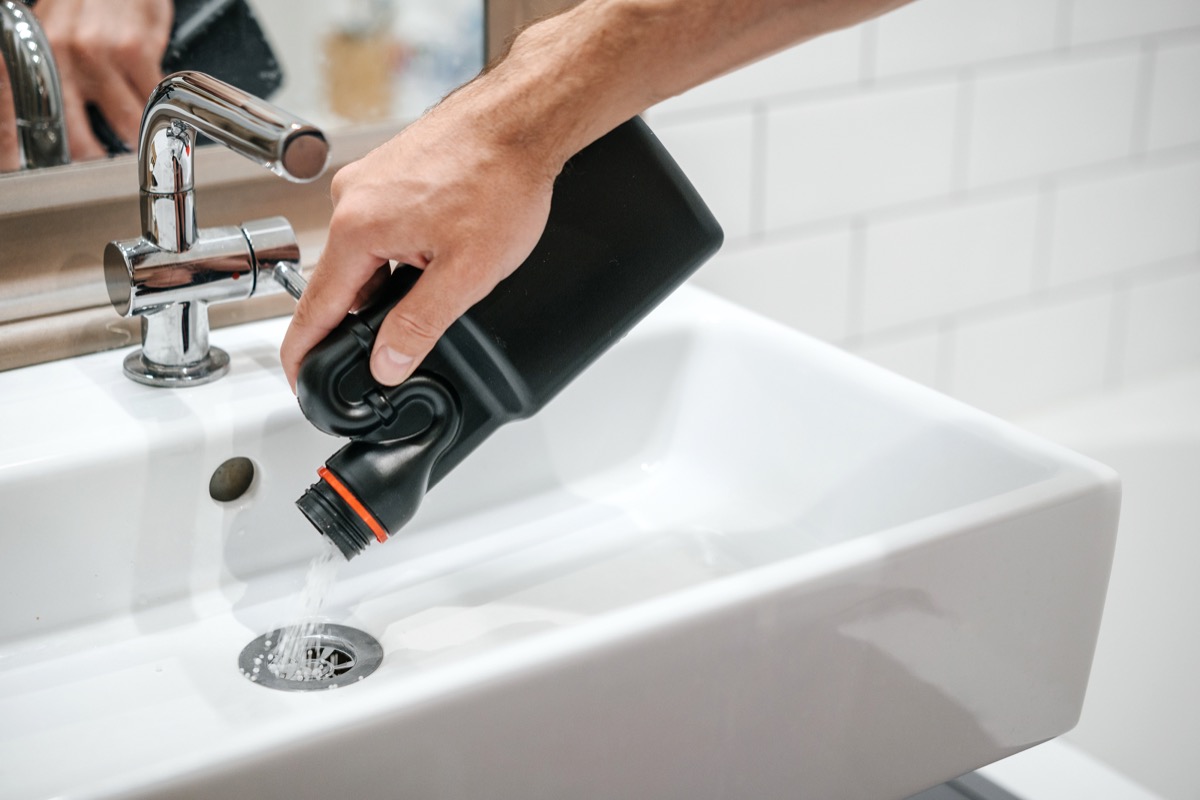
You'll want to think twice before grabbing any drain cleaner off the shelf of your local home supply store.
Chemical drain cleaners "can cause damage and corrosion in your pipes," explains Tim Compton, service manager at Compton Plumbing Services. Instead, he recommends using boiling water or snaking your drain to remove any foreign material. And if you want to keep your pipes in working order going forward, check out these 21 Ways You're Damaging Your Home, According to Your Plumber.
6
Using in-tank toilet cleaners

You may think it will say you time, but that in-tank toilet cleaner might cause more problems than it offers effective solutions.
"Over time, these in-tank detergent dispensers that turn your toilet water blue are very hard on the plastic and rubber parts inside your toilet tank, causing them to weaken," says Paul Abrams of Roto-Rooter, who notes that they will also stiffen the tank's flapper, preventing it from forming a strong seal and potentially setting you up for a leaking tank.
7
Cleaning the bathroom at room temperature
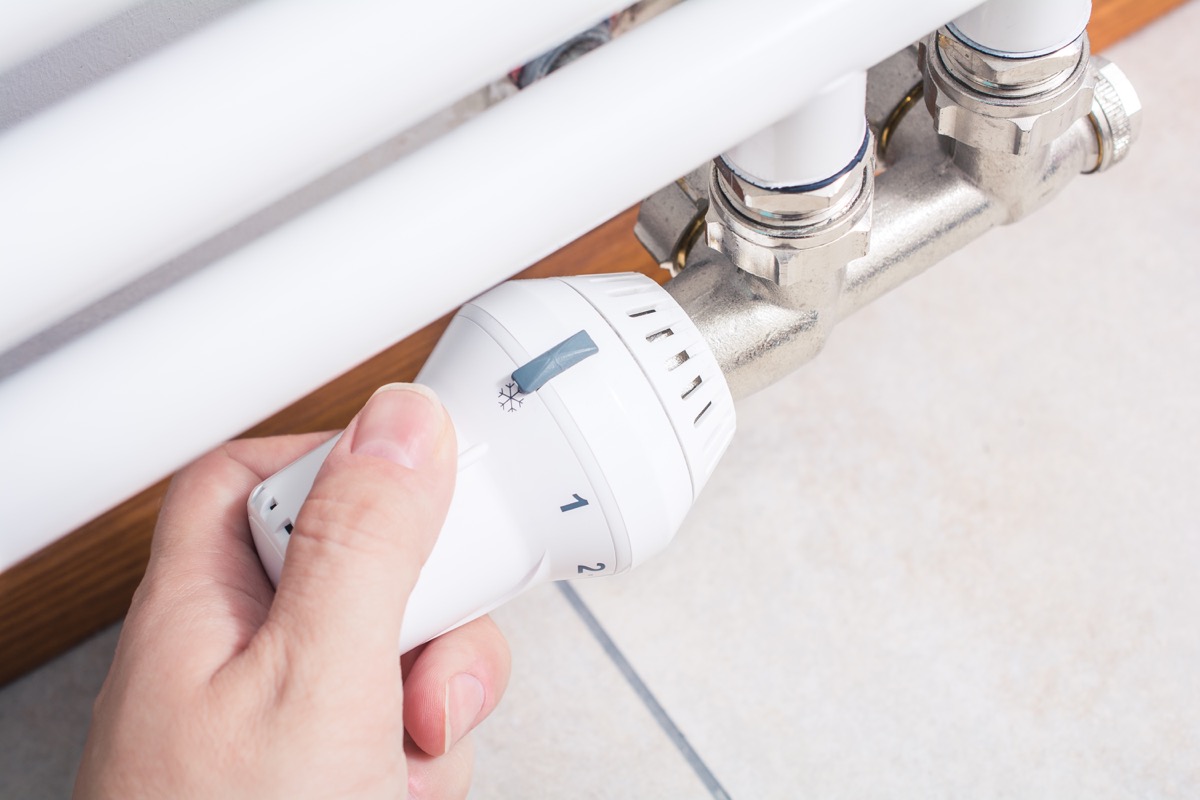
A chilly bathroom isn't fun for your feet—and it's making your cleaning routine less effective, too.
"Certain cleaners, like alkaline cleaners, function better at warmer temperatures since heat helps reduce the oil viscosity and increases the activity of the surfactants," explains Mike Soto, owner of Madison Water Experts. That's why he recommends filling the sink and tub with hot water before you begin cleaning to warm the room up.
8
Forgetting to dust before cleaning

If you're not dusting before you clean, you're only adding work to your plate.
"All you will be doing is moving dust from one place to another," Soto says. "There is also the chance that the bacteria you were hoping to scrub away will remain in the dust."
9
Wiping surfaces right after spraying them
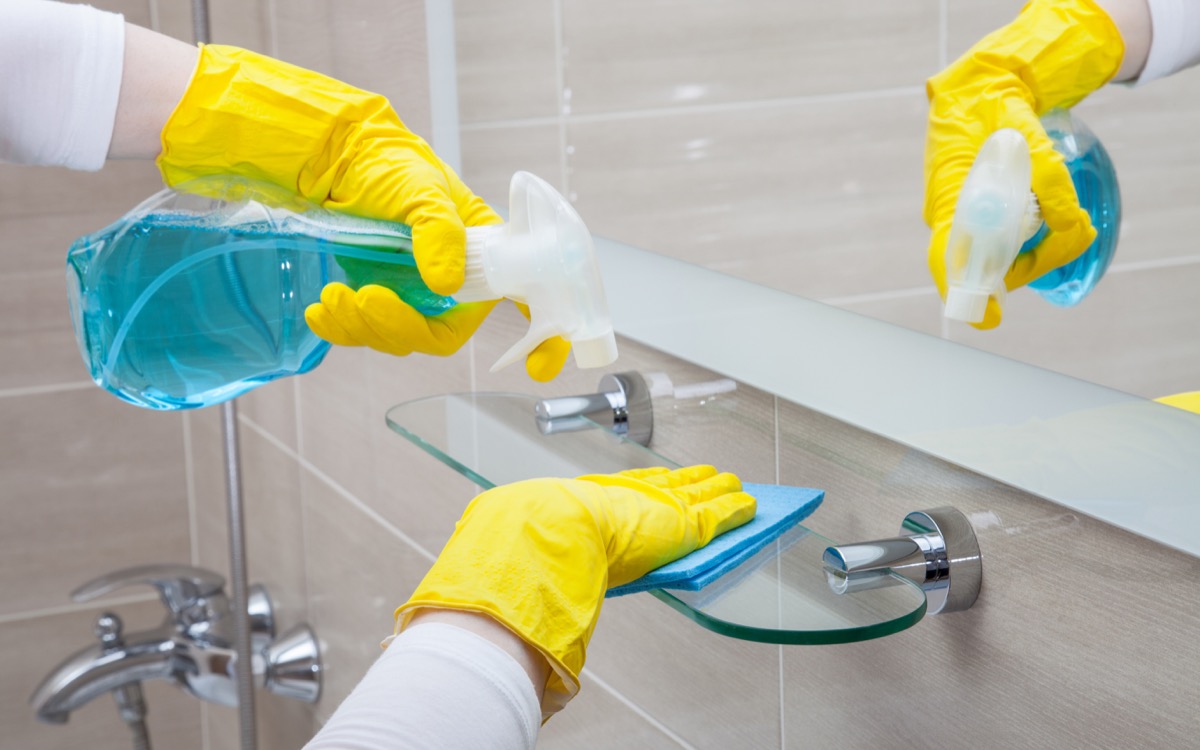
You're better off letting those cleaning products rest for a few minutes instead of wiping them up immediately.
"If you immediately clean up what you just sprayed then it won't always be able to get rid of the bacteria effectively," says Soto, who notes that some products are only effective after being left on for a period of time.
10
Using the same sponge on every surface

Keeping your bathroom squeaky clean means more than just using separate products for separate areas—it also means using separate sponges.
"Rubbing shower, sink, toilet, and mirrors with the same sponge lead to cross-contamination, i.e. transferring bacteria and grime from one surface to another," explains Dean Davies, cleaning supervisor for Fantastic Services, a cleaning company that specializes in antiviral sanitization.
11
Putting your toilet brush away wet
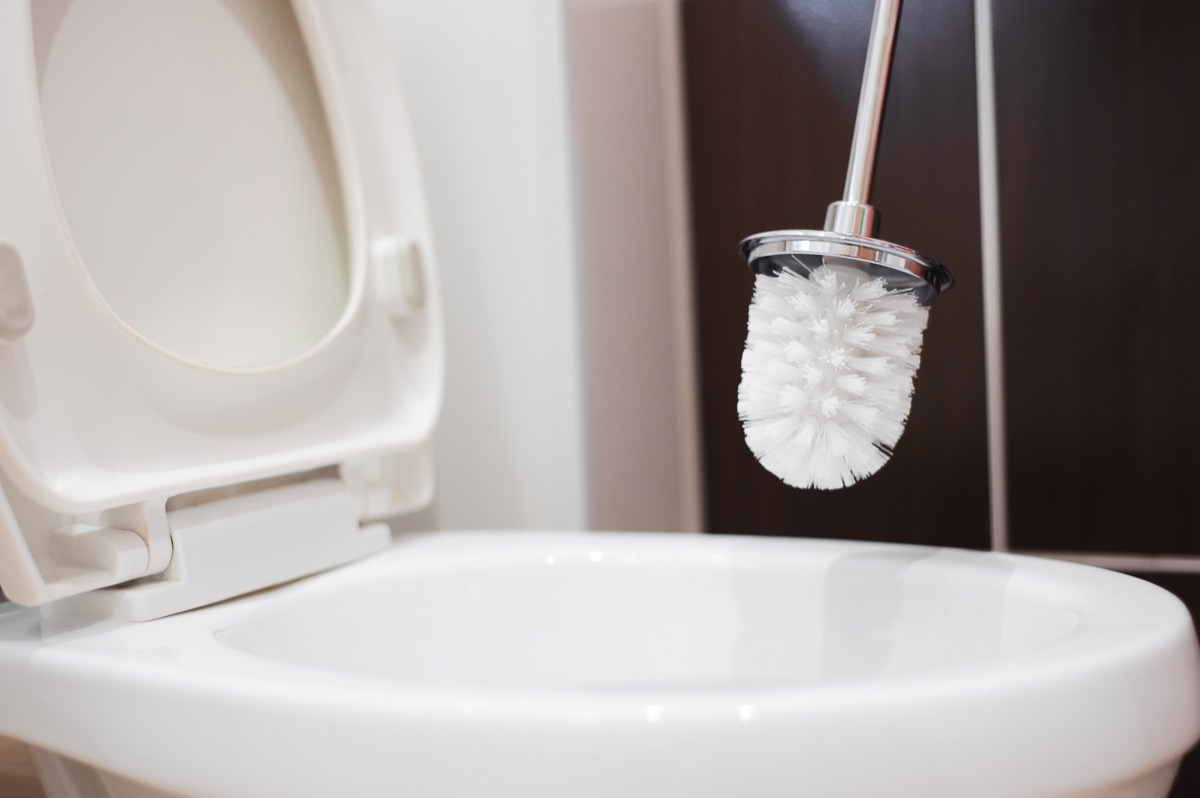
If you're putting your toilet brush away before it has a chance to dry, you're creating a veritable petri dish in its holder, says Sean Parry, a cleaning expert at Neat Services.
Instead, Parry says: "Simply lay it across the bowl to dry completely before putting it back." He also recommends giving it a good soak in antibacterial cleaning solution from time to time.
12
Using an abrasive cleanser or sponge on stainless steel or ceramic surfaces
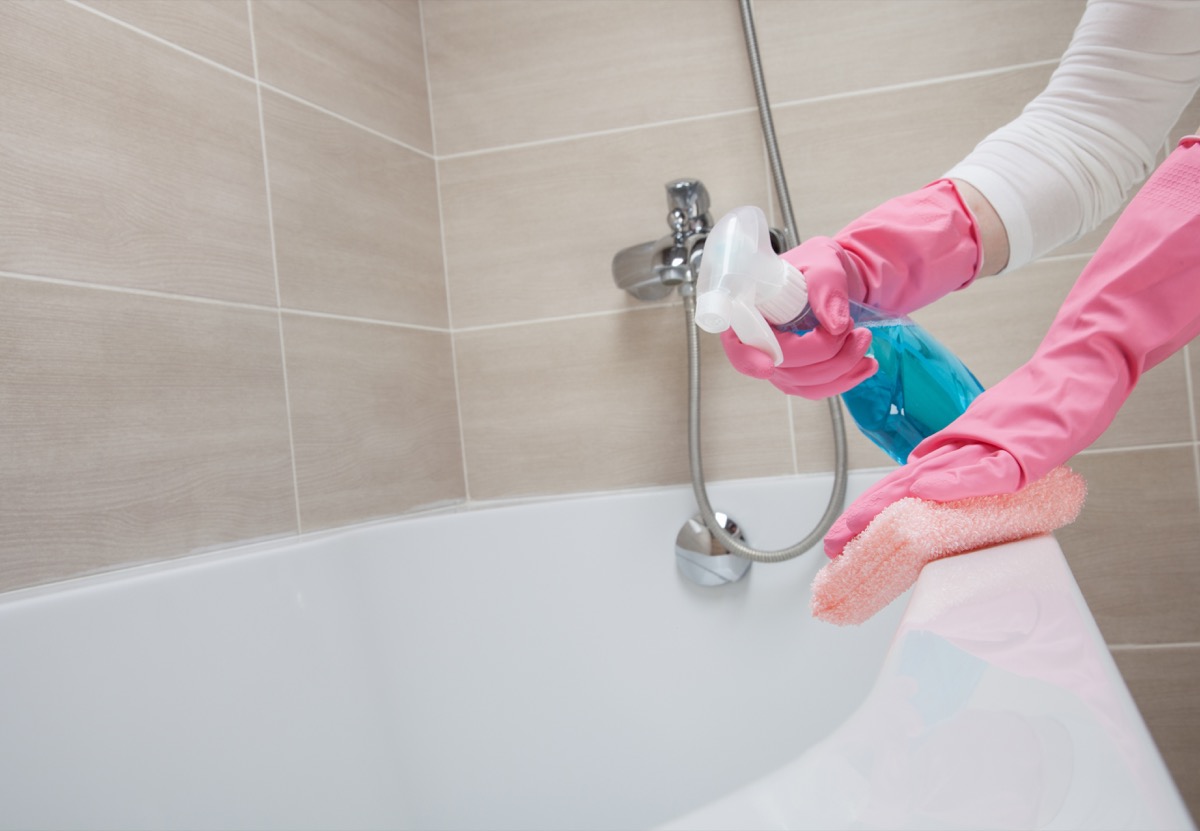
Harsh scrubbing cleansers can wreak havoc on more delicate bathroom surfaces. "Using a cleaner that is too abrasive on stainless steel, your shower, or the tub floor [causes] damage to the finish," explains Maid Right franchisee Justin Rowling.
13
Using toilet bowl cleaner in your shower
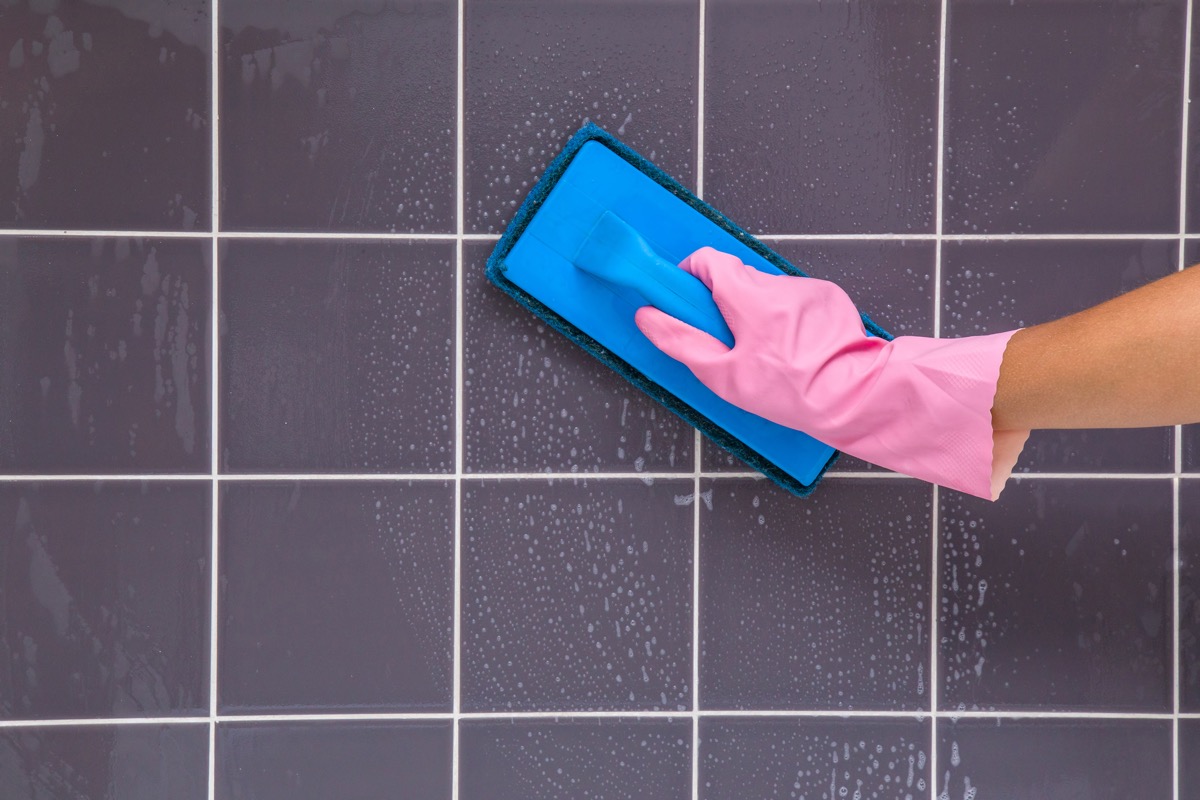
So, what's the problem with using toilet-bowl cleaner as an all-purpose solution? "This is known to ruin natural stone and leaves a trail where the caustic liquid was applied,' says Roman Peysakhovich, co-founder of commercial cleaning company, One Desk.
14
Leaving lime scale and bleach products on for longer than indicated
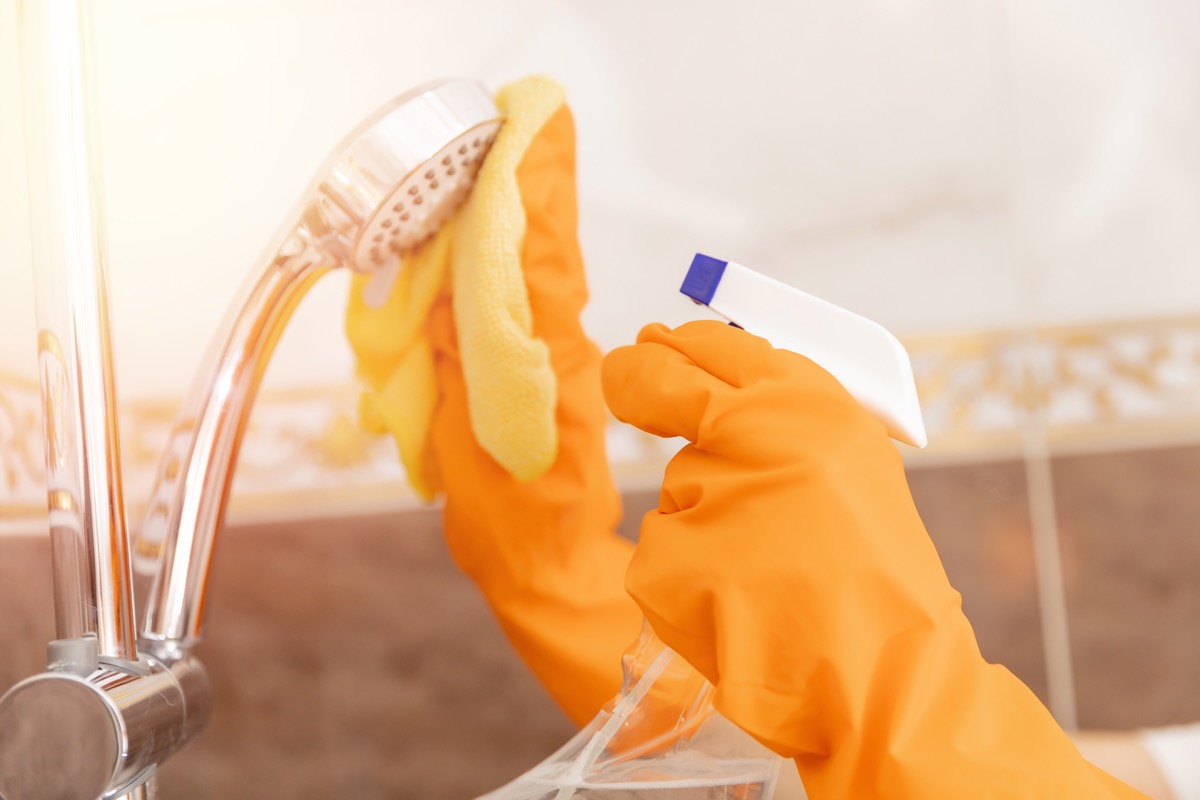
While you don't want to wipe up most cleaning products too early, leaving certain ones on for too long can cause just as much damage.
"This will always cause damage to your faucets and taps," explains Peysakhovich, so make sure to follow the instructions on the bottle to keep them from wearing down those surfaces.
15
Turning your exhaust fan on after cleaning
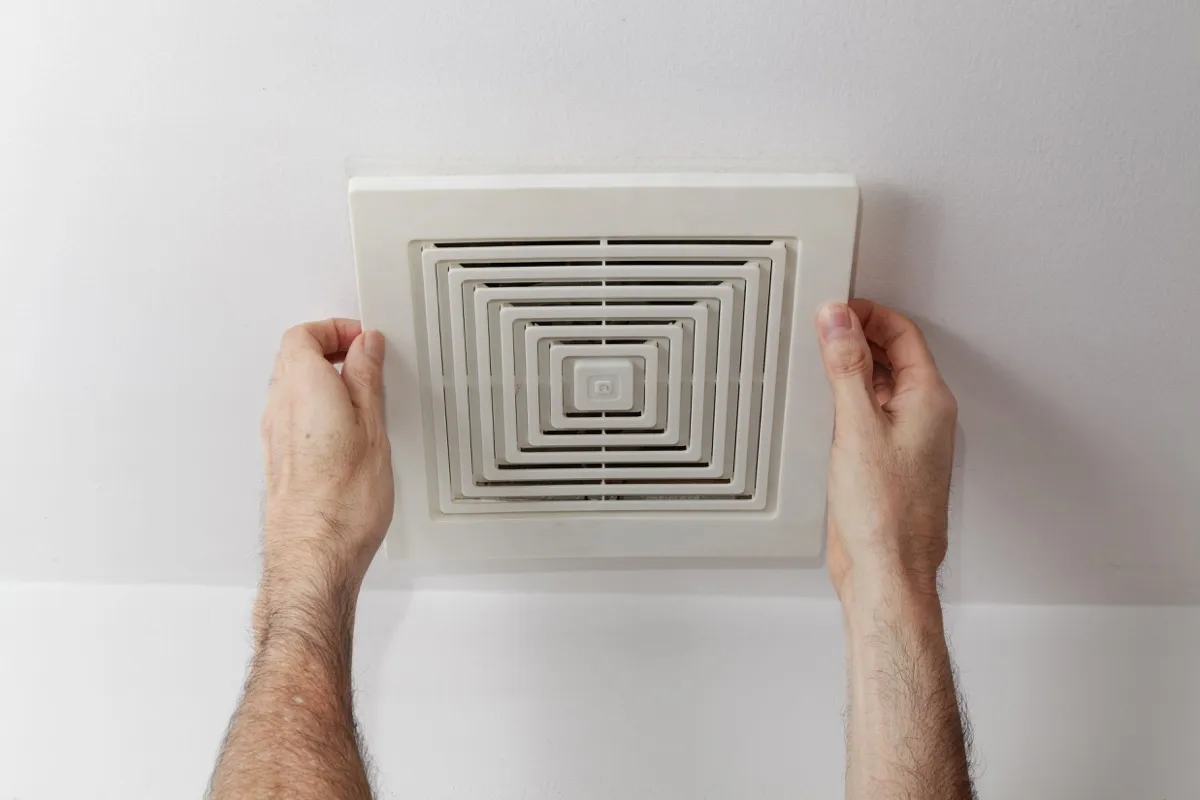
Turning your exhaust fan after a shower is a great way to reduce the development of mold and mildew in your bathroom. Turning it on after you clean, however, is just putting more work on your plate.
"This causes dust to surface on a freshly cleaned surface," explains Peysakhovich. To get the space extra spotless, make sure you clean your exhaust filter and vent regularly—ideally before you start cleaning the rest of the room.


